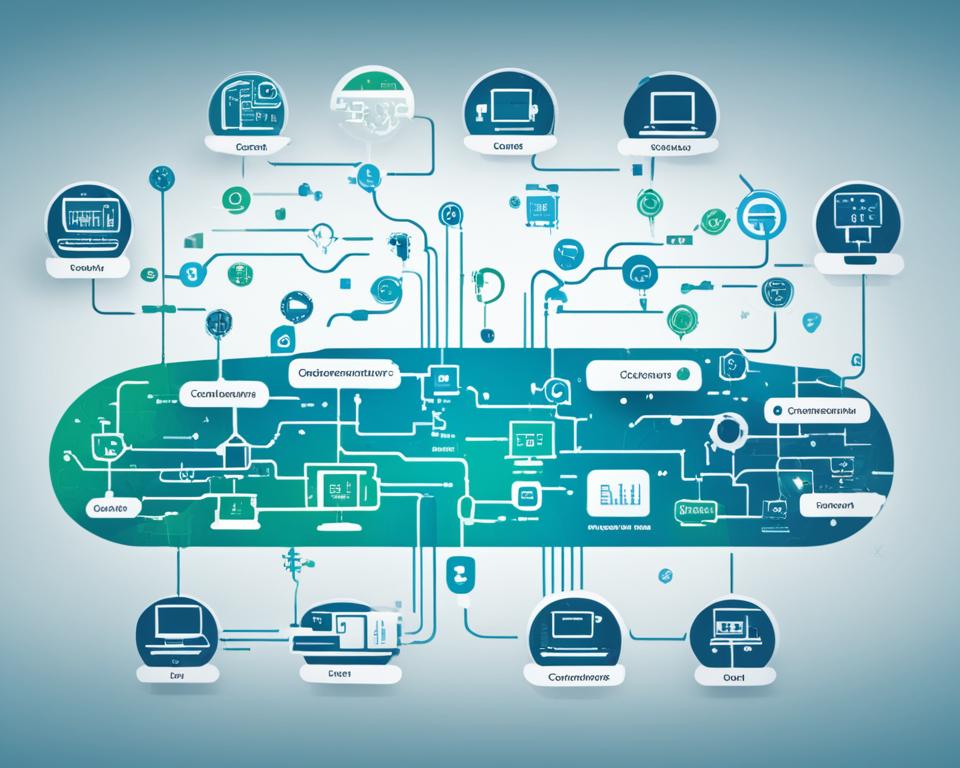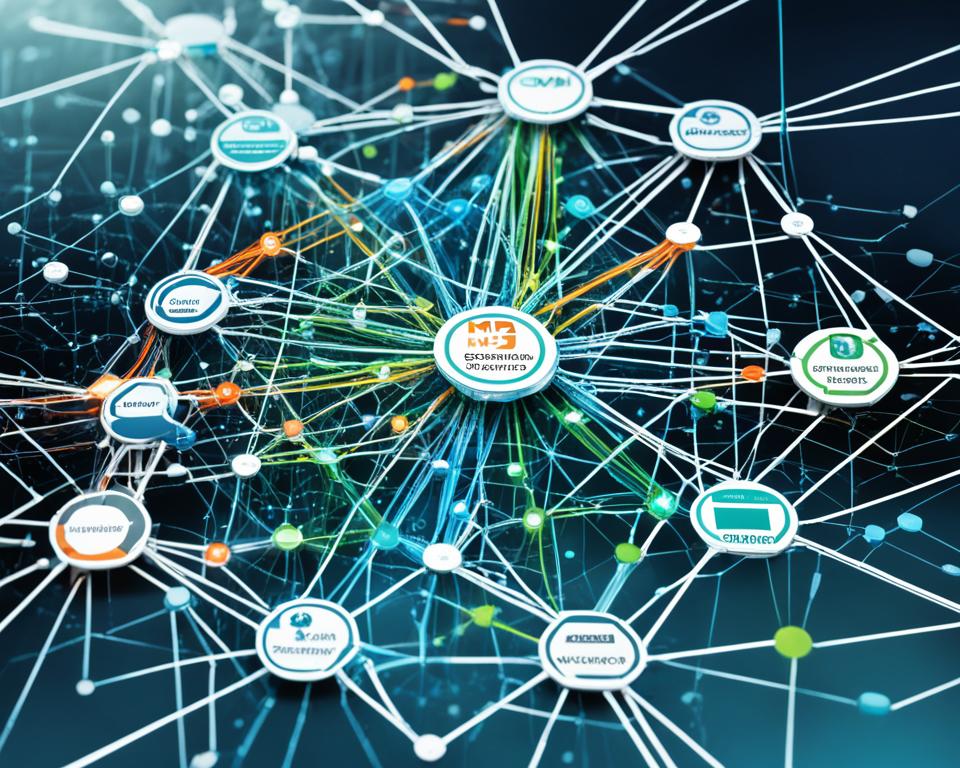Adverts
A M2M technology, or machine to machine communication, allows the automated information exchange between devices, such as machines, vehicles and equipment, in the industrial and private environment. This technology uses access networks, such as the internet and cellular networks, to improve efficiency and optimize business processes, resulting in cost reduction and greater productivity. Furthermore, the remote monitoring and the Remote Control of machines and equipment are common applications of M2M technology, which also makes it possible to rationalization of business processes and offers a great market potential.
Adverts
- A M2M technology allows the automated information exchange between devices.
- Uses access networks, such as the internet and cellular networks, to improve efficiency and optimize business processes.
- O remote monitoring and the Remote Control are common applications of technology M2M.
- The technology M2M offers a great market potential and help in rationalization of business processes.
- A machine to machine communication brings benefits such as cost reduction and increased productivity.
History of M2M technology
The technology M2M (machine to machine communication) has a fascinating origin in manufacturing industry, where solutions telemetry It is remote monitoring were already used to manage equipment data remotely.
The pioneering of M2M communication is often attributed to Theodore Paraskevakos, who invented and patented the data transmission through telephone lines. This innovation was fundamental to the development of modern devices such as caller ID.
“M2M communication had its first practical action when Theodore Paraskevakos connected a telephone to an object, sent digital signals to telephone lines, and introduced the ability to data transmission.” – Theodore Paraskevakos, Inventor and pioneer of M2M communication
One of the first companies to adopt the M2M acronym was Nokia, in partnership with Opto 22, a manufacturer of automation industrial. Collaboration between these companies drove the development of M2M technology in its early stages.
Adverts
In 2003, the magazine M2M Magazine was launched, providing a dedicated space for the discussion and advancement of M2M technology. The magazine also defined the six pillars of M2M, establishing solid foundations for the continued progress of this technology.
Main milestones in the history of M2M technology:
- Origin: Manufacturing Industry and solutions for telemetry.
- Invention by Theodore Paraskevakos: Data transmission through telephone lines.
- Adoption of the acronym M2M: Nokia It is Opto 22.
- Launch of M2M Magazine: Magazine specializing in M2M technology.
- Definition of the M2M pillars: Fundamentals for the advancement of technology.
M2M communication applications
M2M communication has a wide range of applications in different sectors such as transport, fleet management, facilities management, supply companies, vending machines, security systems, health, production It is automation.
In the sector of transport, M2M communication allows the tracking and management of vehicle fleets, providing greater efficiency and control. This is especially useful for companies transport who want to optimize their operations and reduce costs.
See too:
At fleet management, M2M communication is essential for monitoring and tracking vehicles in real time, which allows for better route management, identification of operational problems and scheduling preventive maintenance. This contributes to greater efficiency and cost reduction in transport operations.
“M2M communication is a fundamental tool for facilities management. It allows remote monitoring and control of air conditioning, lighting and security systems, ensuring a more efficient and safe environment.”
In the sector of supply companies, M2M communication is used for remote monitoring of liquid storage tanks, such as fuels and chemicals. This allows for early detection of leaks and immediate corrective actions, avoiding environmental impacts and financial losses.
To the vending machines also benefit from M2M communication, as they can be monitored remotely to ensure adequate product supply and perform maintenance diagnostics. This allows for better sales management and more efficient stock replenishment.
| Sector | M2M communication applications |
|---|---|
| Transport | Vehicle fleet tracking and management |
| Fleet management | Real-time vehicle monitoring and tracking |
| Facilities management | Remote monitoring and control of air conditioning, lighting and security systems |
| Supply companies | Remote monitoring of storage tanks and early leak detection |
| Vending machines | Remote monitoring, adequate product supply and maintenance diagnostics |
| Security systems | Remote monitoring of security cameras and alarms |
| Health | Remote monitoring of patients and medical equipment |
| Production | Remote control and maintenance of machines and equipment |
| Automation | Process optimization industrial and systems integration |
“M2M communication in the area of health allows remote monitoring of patients, facilitating medical monitoring and providing greater comfort and safety to patients.”
In security systems, M2M communication enables remote monitoring of security cameras and alarms, allowing greater surveillance and quick responses to security events.
M2M communication also plays a crucial role in healthcare, enabling remote monitoring of patients and medical equipment. This improves the quality of care, allows for faster and more accurate diagnosis, and ensures that equipment is working correctly.
In the sector of production, M2M technology speeds up industrial processes and enables remote control and maintenance of machines and equipment. This results in greater production efficiency, reduced downtime and lower maintenance costs.
Finally, M2M communication is essential for automation of processes, allowing systems integration and creating optimized workflows. This contributes to greater operational efficiency, reduced errors and better business results.
Components of M2M communication
M2M communication is made up of three basic components that work together to enable automated information exchange between devices:
- Data Endpoint (DEP): The data endpoint is the device to be monitored or controlled. It can be a machine, a vehicle or any other connected device that transmits or receives data.
- Communication Networks: To the communication networks are responsible for transmitting data between devices. Can be mobile networks, wired networks or wireless systems.
- Data Integration Point (DIP): data integration point is the receiver of data collected from endpoint devices. It is connected to a server that monitors and integrates the data received.
A data collect is carried out by data endpoint, which transmits them through a communication network, such as the internet or mobile networks. Subsequently, this data is integrated and monitored by the data integration point, which allows the analysis and use of this information.
The following image illustrates the interconnection of these components in M2M communication:

M2M communication is a continuous process that involves the collection, transmission and integration of data between devices. Each component plays a fundamental role in this process, ensuring that information flows efficiently and enabling automation and systems integration.
Success factors in M2M communication
The success of M2M communication depends on the cooperation between solution partners, network operators and customers. This cooperation is essential to ensure efficient and successful implementation of M2M solutions. Furthermore, some essential factors contribute to the success of this communication.
- Cost-benefit analysis: Carrying out a careful analysis of costs and benefits is essential before implementing M2M solutions. It is necessary to assess whether the expected benefits exceed the necessary investments, ensuring a satisfactory return.
- Acceptance of technology: A acceptance of M2M technology by all parties involved is essential for successful communication. Customers, network operators and solution partners must understand the benefits and added value it provides.
- Suitable hardware: The choice of suitable hardware is crucial to ensure the smooth functioning of M2M communication. It is important to consider reliable and quality devices to obtain satisfactory results.
- Proper communication: Efficient communication between devices is a key factor in the success of M2M communication. It is necessary to ensure good connectivity and reliable information exchange.
- Mobile networks: Mobile networks play a fundamental role in M2M communication. It is important to have reliable networks with good coverage to ensure constant communication between devices.
- Pricing competitive: The cost of M2M solutions It is also a determining factor in the success of communication. Pricing Competitive and accessible technologies facilitate the adoption of this technology by companies of different sizes.
- Protocols efficient: The use of protocols efficient is essential to guarantee the integrity and security of data transmitted in M2M communication. Protocols robust and reliable data contribute to a consistent and secure data flow.
- Integration into existing workflows: Integrating M2M solutions into existing workflows is an important success factor. Solutions must be able to integrate harmoniously and efficiently into operations already established in companies.
The narrow cooperation between solution partners, network operators and customers, combined with the consideration of these factors, is fundamental for the successful planning and implementation of M2M solutions. By taking these aspects into account, companies can explore the full potential of M2M communication, achieving greater efficiency, cost reduction and optimization of business processes.

Conclusion
Machine-to-machine communication, or M2M, is an innovative technology that is driving digital transformation across multiple industries. With M2M solutions, companies have the opportunity to increase their efficiency, improve their competitiveness and optimize your processes, resulting in reduced operational costs. The automation provided by M2M communication allows machines to communicate and interact intelligently, resulting in greater productivity and efficiency in the work environment.
One of the main benefits of M2M technology is the systems integration, allowing devices and equipment to connect seamlessly, facilitating the exchange of information and sharing of data in real time. This systems integration is essential to optimize business processes and make them more efficient.
Furthermore, M2M communication offers a wide market potential, opening new business opportunities in different sectors. With the automation and systems integration provided by this technology, companies can find innovative solutions to face the challenges of the current market, improving their competitiveness and driving growth.



